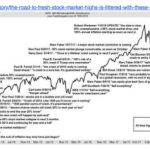Bloomberg created a function that claims to give the odds of a Fed move by interpolating from the Fed funds futures and options contracts. It is widely used, but I remain a skeptic.

It is based on assumptions that are not particularly transparent. These are particularly important given that unlike past cycles, the Federal Reserve has adopted a target range for Fed funds. Where Fed funds trade relative to its range key for the futures contract, but is not known. In addition, the incorporation on options pricing, which often thinly traded with wide spreads between bids and offers, needlessly inject noise into the calculation.
Bloomberg over-engineers its analysis. It is helpful to return to basics. The Fed funds futures contracts settle at the average effective Fed funds. The December meeting concludes on December 16. The effective Fed funds rate has been averaging 14 bp.
If we assume that the Fed funds average 14 bp through the Fed meeting (14 bp times 16 days equal 224).What should we assume for the second half of the month? One idea is that is averages the middle of the new range as it has averaged around the middle of the old range. So if Fed funds average 37 bp in the second half of December (37 bp times 15 days equal 555). We add the two sums together (224 plus 555) we get 779. We divide by 31 to get the daily average (779/31), and we get 25.1. Currently, the December contract has an implied yield of 20.5 bp.
Fair value that ranges from 14 bp on the idea that it does not raise rate this year to 25.1 bp on a quarter point hike. At 20.5 bp, the December contract implies at 58.6% chance of a hike. The difference between the current effective Fed funds rate and effective rate on a 25 bp hike is 11.1 bp and the December contract. Of that 11.1 bp, the December contract has priced in 6.5 (6.5 divided by 11.1 equals 58.6%). Bloomberg’s WIRP calculation says there is a 36.4% chance of a 25 bp hike the target range at the December FOMC meeting.













Leave A Comment